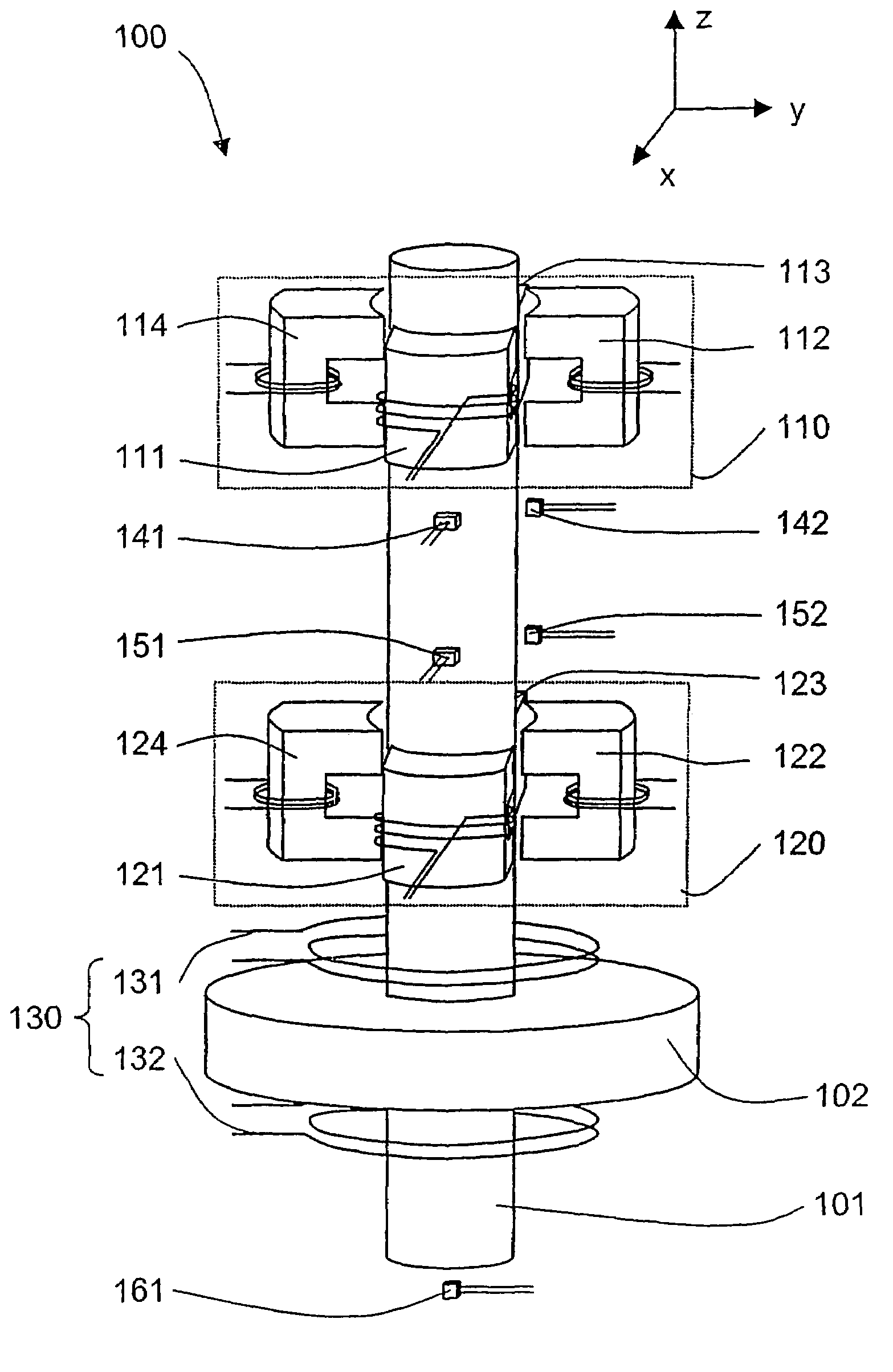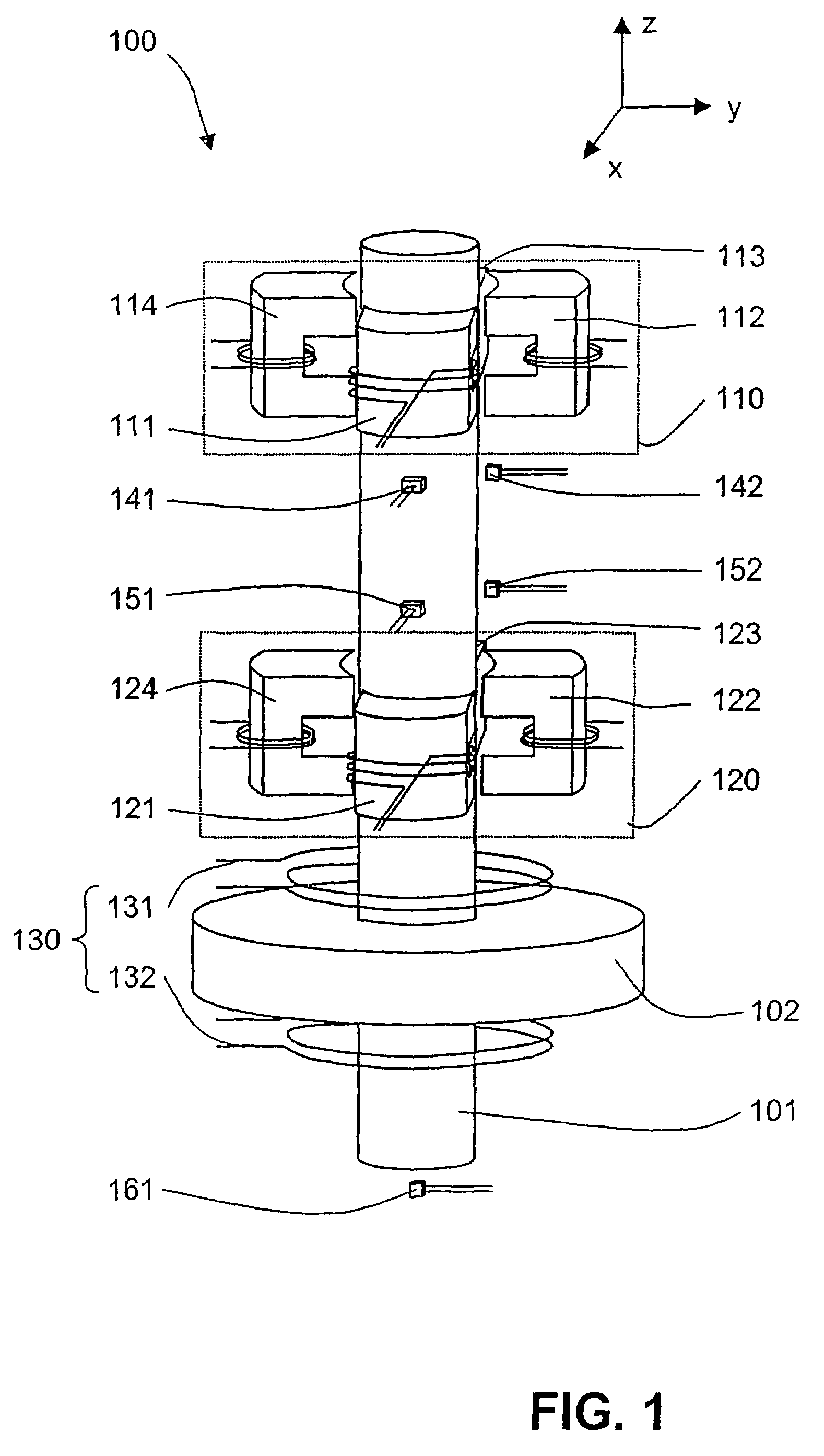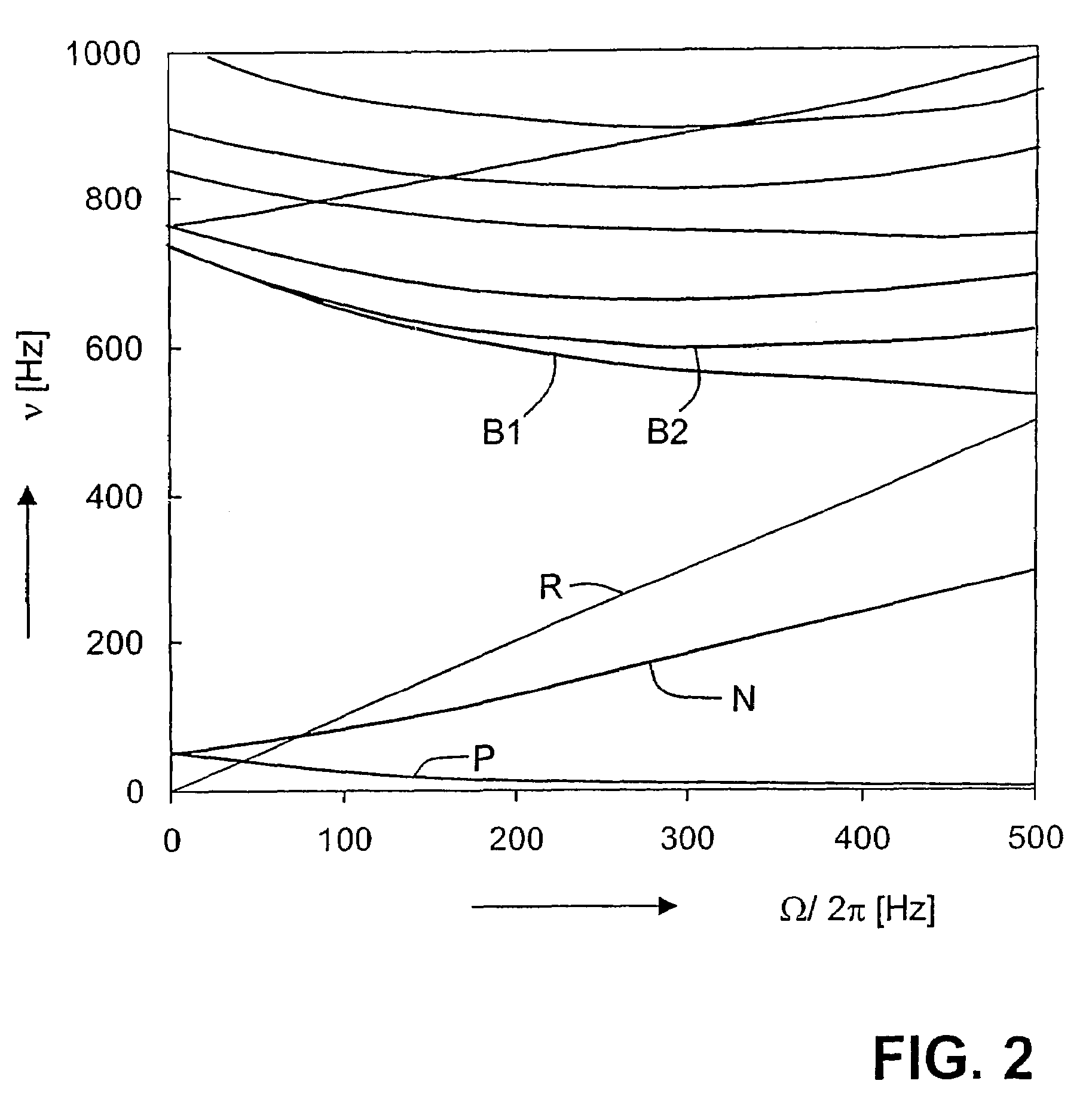Method and apparatus for controlling a magnetic bearing device
a magnetic bearing and control scheme technology, applied in the direction of bearings, shafts, dynamo-electric machines, etc., can solve the problems of inability to achieve good control schemes in controlling tilting motions, failure to achieve good control schemes in prior art, and failure to achieve stable control at high rotation frequency. achieve the effect of stable control of a magnetic bearing devi
- Summary
- Abstract
- Description
- Claims
- Application Information
AI Technical Summary
Benefits of technology
Problems solved by technology
Method used
Image
Examples
Embodiment Construction
[0062]First, some features of a magnetic bearing device will be explained by way of example with reference to FIG. 1. This figure shows, in a highly schematic manner, a rotor shaft 101 suspended in a magnetic bearing device 100 for rotation about the z direction. Attached to the rotor shaft may be a rotor body carrying, e.g. rotor blades for use in a TMP, which is not shown in FIG. 1. The bearing device comprises a first (upper) radial bearing unit 110, a second (lower) radial bearing unit 120, and an axial (thrust) bearing unit 130 cooperating with a disk 102 attached to the shaft 101. The upper radial bearing unit 110 comprises four actuators 111, 112, 113, and 114 for exerting forces on an upper region of the shaft 101 in the +x, +y, −x, and −y directions, respectively, the x and y directions being mutually orthogonal and perpendicular to the z direction. Likewise, the lower radial bearing unit 120 comprises four actuators 121, 122, 123, and 124 for exerting forces on a lower reg...
PUM
 Login to View More
Login to View More Abstract
Description
Claims
Application Information
 Login to View More
Login to View More - R&D
- Intellectual Property
- Life Sciences
- Materials
- Tech Scout
- Unparalleled Data Quality
- Higher Quality Content
- 60% Fewer Hallucinations
Browse by: Latest US Patents, China's latest patents, Technical Efficacy Thesaurus, Application Domain, Technology Topic, Popular Technical Reports.
© 2025 PatSnap. All rights reserved.Legal|Privacy policy|Modern Slavery Act Transparency Statement|Sitemap|About US| Contact US: help@patsnap.com



